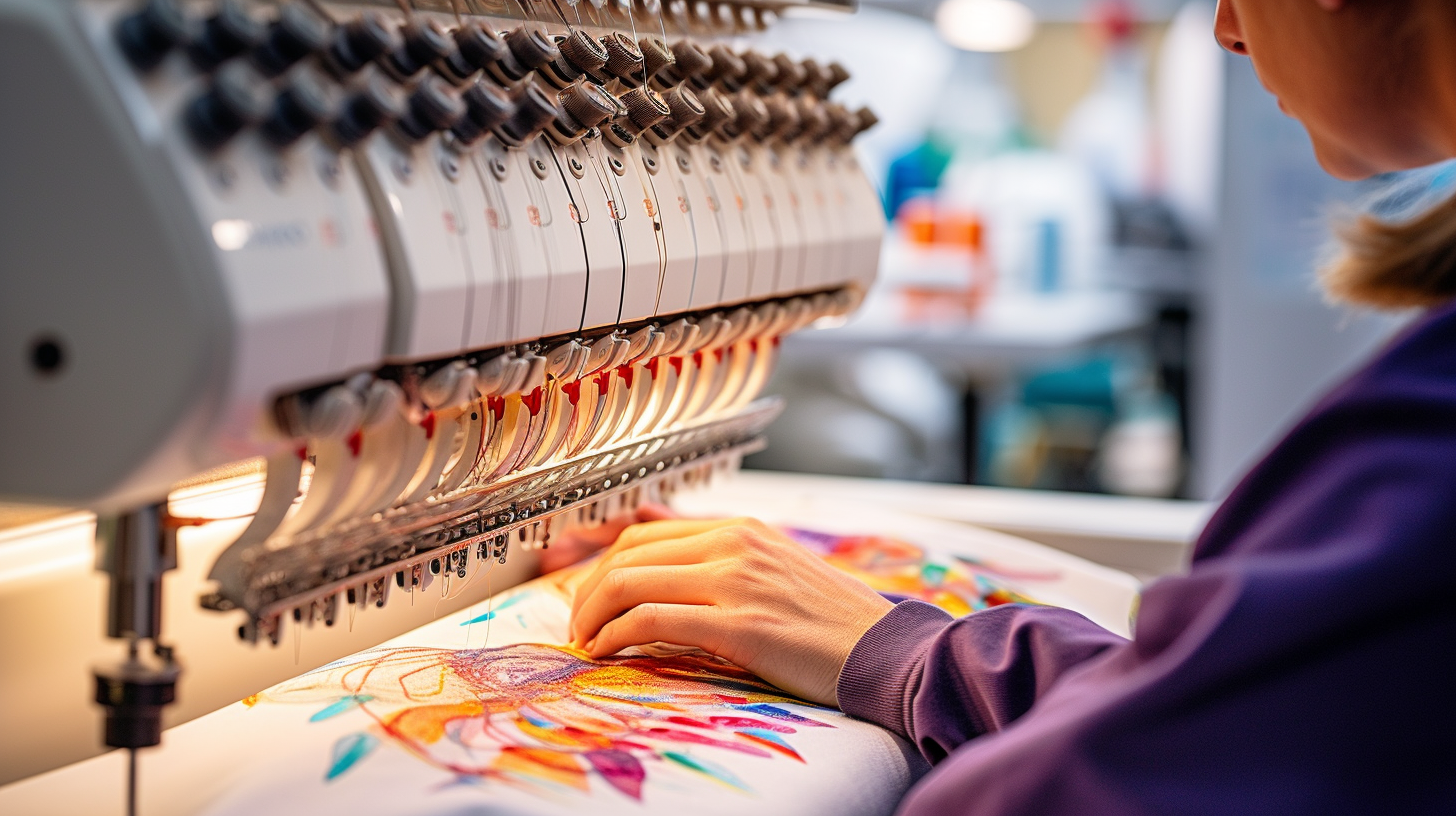Simplifying the Art of Embroidery Digitizing: Step-by-Step Guide
As technology continues to development, the digitization procedure has actually become extra accessible, permitting enthusiasts to bring their elaborate designs to life with ease. In this overview, we will unravel the complexities of embroidery digitizing, damaging down each action methodically to enhance the procedure and encourage both beginners and skilled embroiderers alike.
Comprehending Needlework Digitizing Software
Embroidery digitizing software application works as a crucial tool for changing complex designs right into digital layouts suitable with embroidery machines, assisting in accurate stitching and personalization. This specific software permits customers to import different image documents styles, such as JPG or PNG, and convert them right into needlework machine-readable styles like DST, EXP, or PES - Digitizing for Embroidery. By utilizing features like stitch editing, rug options, and string shade choice, digitizing software program allows customers to control every facet of the design procedure
Additionally, progressed embroidery digitizing software application offers tools for creating complicated designs, changing stitch density, and incorporating complex details. Customers can also sneak peek the design before stitching it out, ensuring accuracy and decreasing mistakes. Additionally, many software application offer automatic functions that aid improve the digitizing procedure, conserving effort and time.
Recognizing the capabilities of embroidery digitizing software program is essential for accomplishing top quality cause embroidery tasks. By understanding this device, needlework enthusiasts and specialists can unleash their imagination and bring complex layouts to life with accuracy and performance.

Choosing the Right Layout Documents
After familiarizing yourself with the abilities of embroidery digitizing software program, the following essential step in the procedure is selecting the ideal design documents for your project. Digitizing for Embroidery. When selecting a style apply for embroidery digitizing, it's important to take into consideration the complexity of the style, the size of the end product, and the sort of material you will certainly be collaborating with
For complex layouts with fine information, a high-resolution image or vector file is recommended to make certain that the needlework maker can precisely reproduce the layout. Furthermore, the size of the end product plays a significant duty in picking the ideal design file. Bigger layouts might call for greater resolution documents to keep quality and sharpness.
Moreover, the sort of fabric you will be stitching on affects the option of layout data. Different materials may require adjustments in the layout data to guarantee that the stitches are effectively straightened and the layout looks like intended. By thoroughly selecting the right design file based upon these variables, you can establish yourself up for an effective embroidery digitizing procedure.
Digitizing Tools and Strategies
Making use of specialized software application and precision strategies, digitizing tools are important in changing intricate designs right into embroidery-ready files. Needlework digitizing software application, such as Wilcom, Hatch, or Embrilliance, gives the required system to transform artwork right into stitch information. These programs supply attributes like stitch editing, rug alternatives, and text tools to guarantee the style equates flawlessly onto textile.
One of the crucial techniques in digitizing is creating a clear path for the embroidery maker to follow. This includes digitizing each component of the style with precision, establishing stitch types, densities, and directions. By utilizing tools like digitizing tablet computers or software-specific plugins, embroiderers can attain a high level of precision in their digitized styles.
Furthermore, understanding the art of underlay stitching is critical for producing top quality embroidery. Underlay stitching supports the material and these details develops a foundation for the design, ensuring that the last item is both aesthetically appealing and lasting. By comprehending these digitizing devices and techniques, embroiderers can elevate their craft and bring complex styles to life with accuracy and performance.
Customizing Stitch Types and Directions
The option of stitch kinds can significantly influence the overall look and texture of the stitched style. By strategically combining these stitch kinds, embroiderers can attain depth and measurement in their styles.
In addition, the instructions of stitches plays an important function in improving the visual allure of the last embroidery. Numerous stitch instructions can add appearance, emphasize certain aspects, and create aesthetic rate of interest. For example, changing the angle of stitches have a peek here can imitate motion or natural patterns like fur or feathers. By experimenting with various stitch angles and patterns, embroiderers can bring their designs to life with impressive detail and ins and out. Mastering the art of tailoring stitch types and directions equips embroiderers to unleash their creative thinking and boost the top quality of their work.
Screening and Refining Your Digitized Style
To make sure the precision and top quality of your digitized design, extensive testing and refinement are necessary action in the needlework digitizing procedure. When you have finished the digitization of your style, it is vital to check it prior to continuing with the real embroidery. Checking enables you to determine any type of prospective problems such as thread breaks, stitch density problems, or style distortions that may impact the last result.

After screening, it is important to refine your digitized layout based upon the feedback from the test sew-out. This may include tweaking sew settings, changing densities, or making changes to the overall layout to accomplish the preferred outcome. By repeating through screening and improvement, you can fine-tune your digitized layout to perfection before moving on with the real needlework process.
Verdict
In verdict, grasping the art of embroidery digitizing requires why not try this out a detailed understanding of the software program, choosing the best design data, utilizing digitizing devices and methods, tailoring stitch types and instructions, and testing and improving the digitized style. By following these actions, embroiderers can simplify the digitizing process and create premium embroidered styles with precision and efficiency.